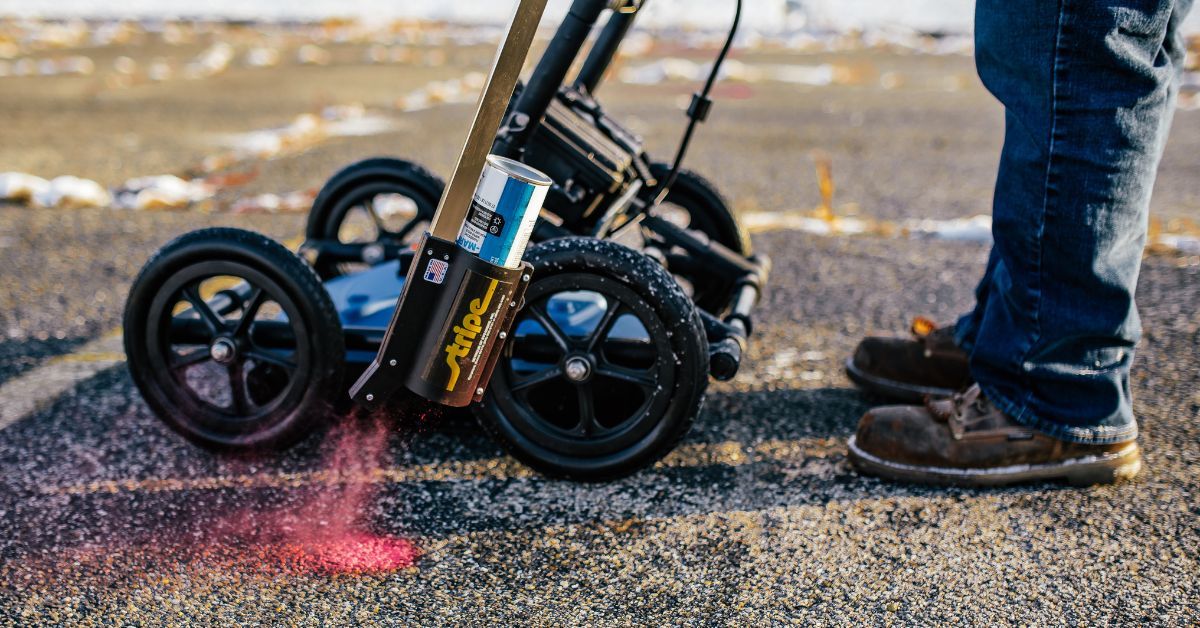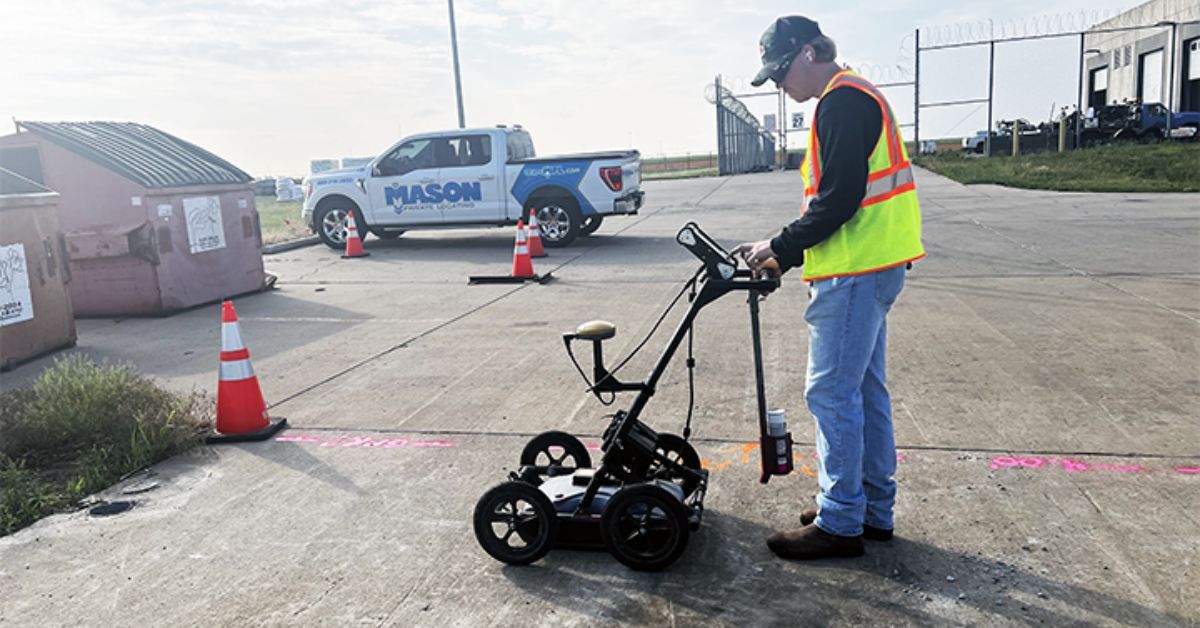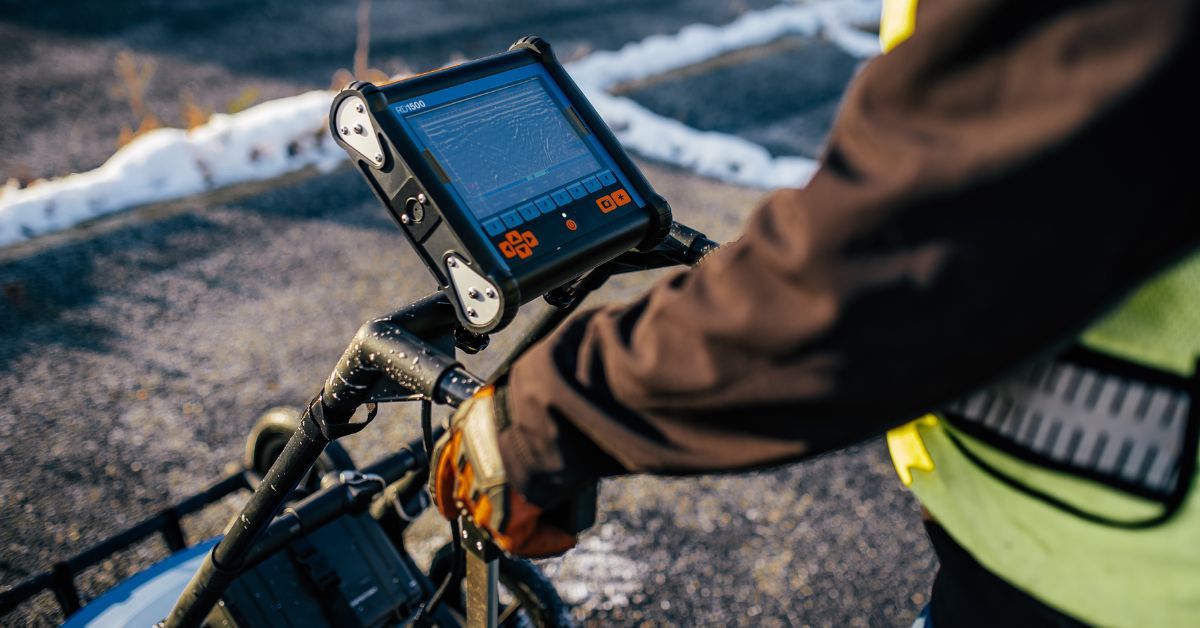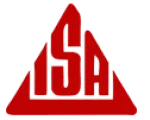
Before any excavation or construction project begins, understanding what lies beneath the surface is a necessity for safety and efficiency. While traditional methods can identify many subsurface elements, they often have limitations. Ground Penetrating Radar (GPR) offers a comprehensive solution, providing a non-invasive way to see anything hidden underground.
This technology has revolutionized how industries approach subsurface investigation, offering unparalleled accuracy and detail. In this blog, we'll explore the groundbreaking uses and what GPR can detect, so you can better understand the benefits it can bring to your job site.
How GPR Works: Technology and Process
GPR transmits high-frequency radio waves into the ground through an antenna. When these waves encounter a subsurface object or a boundary between different materials, they reflect back to the surface. A receiving antenna captures these returning signals. The GPR system's computer then records the time it takes for the signal to travel from the transmitter, reflect off an object, and return to the receiver, as well as the strength of the returning signal.
The GPR system then processes the data in real time to create a visual cross-section of the subsurface, also known as a radargram. The system interprets variations in the reflected signals to identify the location, depth, and characteristics of buried objects. The electrical conductivity of the ground and the antenna frequency influence the depth of penetration of GPR.
For example, dry, sandy soils allow for deeper penetration—up to 50 feet in optimal conditions—while clay-rich or saturated soils may limit the effective depth. By analyzing these reflections, trained technicians can accurately map underground features without disruptive excavation.
Key Capabilities of GPR in Detection
The primary advantage of GPR technology is its ability to locate a wide array of subsurface objects and features, regardless of their material composition. This makes it an indispensable tool for comprehensive site investigation.
Underground Utility Lines and Pipes
One of the most common applications of GPR is the detection of underground utilities. While electromagnetic (EM) locators are effective at finding metallic pipes and cables that carry an electrical current, they cannot detect non-conductive lines.
GPR excels in this area, identifying utilities made from various materials. This includes plastic pipes for water or gas, concrete storm drains, and fiber optic cables. GPR provides precise horizontal and vertical positioning of these utilities, allowing construction crews to avoid costly and dangerous strikes during excavation.
Non-Metallic Materials
GPR's ability to locate non-metallic objects extends beyond utility lines. The technology is highly effective at identifying buried structures made of plastic, concrete, fiberglass, and other non-conductive materials. This makes it possible to locate septic tanks, underground storage tanks (USTs), concrete footings, and even void spaces within the ground or concrete structures.
For example, GPR can detect PVC pipes that lack tracer wires, which are untraceable with standard EM equipment. This capability guarantees a more complete and accurate picture of the subsurface environment.
Ground Disturbances
GPR technology is sensitive enough to detect changes in soil composition and density. This allows it to identify areas with ground disturbances, such as trench lines from previous excavations, even if the original utility is no longer there.
The backfilled soil in a trench has different properties than the surrounding undisturbed soil, creating a contrast that GPR can detect. This is also why forensic investigations and cemetery mapping use GPR to identify soil disturbances.

Benefits of Using GPR for Your Job Site
GPR is clearly a valuable tool for any construction or excavation project. While GPR may seem like a specialized technology, its benefits extend beyond just utility locating. In this section, we will explore some of the key benefits of using GPR for your job site.
1. Accurate Location of Underground Utilities
As mentioned earlier, GPR is a common tool for utility location. With its ability to penetrate through different types of soil and detect changes in material properties such as density and moisture content, GPR can accurately locate underground pipes, cables, and other utilities. This eliminates the need for guesswork or trial-and-error methods, saving both time and money.
2. Non-Destructive Testing
GPR is a non-destructive testing method, meaning it does not damage or disrupt the surface it is scanning. This is especially beneficial when working on sensitive sites such as historical buildings or areas with environmental concerns. With GPR, you can safely scan the area without causing any harm to the surroundings.
3. Quick Scanning and Real-Time Results
Speed is one of the key advantages of GPR inspection services. Depending on the size and terrain of the area you need to scan, GPR can provide results in real time or within a matter of hours. This makes it an efficient and time-saving method for conducting surveys, inspections, and investigations.
GPR can also quickly scan multiple layers of materials, such as concrete, asphalt, soil, and more. This allows for a more comprehensive understanding of the subsurface conditions without the need for extensive excavation or drilling.
Industries Benefiting from GPR
Now that we understand what GPR can detect, let's explore some of its groundbreaking uses. GPR's ability to provide accurate subsurface data helps many organizations and sectors enhance safety, reduce project delays, and prevent unexpected costs.
Airports and Transportation Hubs
Airports, ports, and other major transportation hubs operate on complex networks of underground infrastructure. GPR can effectively map these intricate systems of power lines, communication cables, and drainage pipes. This ensures that maintenance and expansion projects can proceed without disrupting critical operations. By providing a clear map of what lies beneath runways, taxiways, and terminals, GPR helps maintain safety and operational continuity in these high-stakes environments.
Commercial Construction
In commercial construction, GPR can investigate the site from initial assessments through to the completion of the project. It helps locate existing utilities before digging begins, preventing accidental damage. It is also useful for concrete scanning to identify rebar, post-tension cables, and conduits within slabs and walls. This information is vital to verify the structural integrity of the building while cutting, coring, or drilling.
Manufacturing and Industrial Plants
Manufacturing facilities and industrial plants have extensive and poorly documented underground utility systems, including process piping, fire lines, and electrical conduits. GPR provides a reliable method for mapping these systems without halting production. Locating these hidden utilities is crucial for planning new installations or performing repairs, preventing accidents, and minimizing downtime. Refineries, power plants, and water treatment facilities all rely on GPR to manage their complex subsurface infrastructure safely and effectively.

The Future of Subsurface Detection
Ground Penetrating Radar is a cornerstone of modern subsurface investigation. Its ability to detect both metallic and non-metallic objects, along with its safety and efficiency, provides a level of certainty that other technologies cannot match. By delivering instant, accurate results on-site, GPR empowers project managers to make informed decisions, mitigate risks, and execute their plans with confidence.
To leverage the full potential of this technology for your next project, contact Mason Private Locating. Our expert technicians utilize state-of-the-art GPR equipment to locate any buried objects within your site with complete accuracy, safeguarding your operations and personnel.













